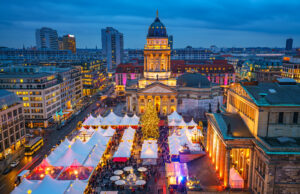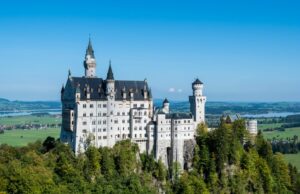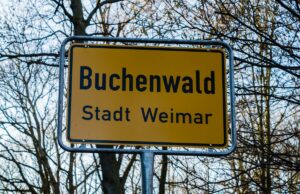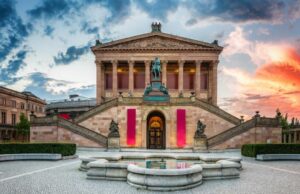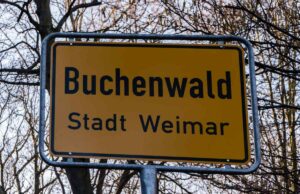
Besides great sights, an interesting history and many exciting destinations, Burnley has a lot more to offer. Here you will find many helpful tips to enjoy your vacation in Burnley.
Here you can find hotels in the area of Burnley
Just type in your destination and get many different suggestions.
Sights in Burnley
Burnley is a market town in Lancashire, England, with a population of 73,021. It is 21 miles (34 km) north of Manchester and 20 miles (32 km) east of Preston, at the confluence of the River Brun and the River Calder. The town is partially surrounded by countryside to the south and east, with the smaller towns of Padiham and Nelson to the west and north respectively. It has a reputation as a regional centre for the hitech and creative industries, and is also a base for distribution and logistics.
The town originated in the 7th century AD as a principle manor of the Honor of Clitheroe and became well established as a market town by the early 12th century. It is recorded in the Domesday Book as “Burnelege”, and later as “Burnley”. By the late 13th century it had acquired its own market charter, though continued to be administered from Clitheroe Castle. The town’s attractiveness as a destination for shoppers was enhanced by the granting of a Free Trade Area at the end of the 18th century, and by the arrival of the Manchester and Leeds Railway in 1846.
From the mid19th century onwards, Burnley began to garner a reputation as a particularly unhealthy place to live. This was exacerbated by the town’s largely underdeveloped drainage system, which led to problems with waterborne diseases such as cholera. In 1848, an outbreak claimed the lives of over 500 people, and in 1853 another outbreak killed 122. A further outbreak occurred in 1858, and in 1864 a Board of Health was established to improve conditions.
Despite these issues, the town continued to grow throughout the 19th century, becoming a county borough in 1888. In the early 20th century, the area around the town centre was subject to largescale redevelopment, with the construction of a new public library, town hall, and shopping precinct. The construction of the M65 motorway in the 1970s resulted in a further period of expansion, though the town has since been affected by deindustrialisation, with the closure of several local factories.
Today, Burnley is a vibrant and thriving town, with a wide range of shops, restaurants, and bars. The town centre is home to a number of historical landmarks, including the Grade I listed St Peter’s Church, and the Grade II listed Towneley Hall. There are also a number of parks and green spaces, including Towneley Park, which is one of the largest municipal parks in England.
Burnley’s popularity as a tourist destination has grown in recent years, and the town now has a range of hotels and guesthouses to accommodate visitors. There are also a number of museums and art galleries, including the Brewood Gallery, which houses a collection of paintings by local artist J. M. W. Turner. Burnley is wellconnected, with good road and rail links to the rest of the country.
History of Burnley
The town of Burnley is situated in Lancashire in North West England. It lies on the River Calder, on the southern edge of the Pennines, and has a population of around 73,000. The town has a long and rich history, dating back to the Roman period. It was an important market town in the medieval period, and in the Industrial Revolution it became one of the most important centres for the production of textiles and Lancashire cotton.
The first recorded mention of Burnley is in the Domesday Book of 1086, where it is listed as Brunlei. It is thought that the name derives from the Old English words burna (stream) and ley (clearing or meadow), meaning “stream meadow”.
Burnley is known to have been settled by the Romans, and there are still Roman remains in the town, including a bathhouse on Manchester Road. In the medieval period, Burnley was an important market town, with its own market charter granted by King Henry III in 1294. The town grew rapidly in the 14th century, and by the time of the English Civil War had a population of over 5,000.
Burnley was on the Parliamentarian side in the Civil War, and in 1643 the town was besieged by Royalist troops. The siege was lifted after just two days, but the town was badly damaged by the Parliamentary troops who subsequently occupied it.
After the Restoration of the monarchy in 1660, Burnley prospered as a market town and coaching stop. In 1721 the first cotton mill was built in the town, and by the end of the 18th century there were over 50 textile mills in operation in Burnley. The town became one of the centres of the Lancashire Cotton Industry, and its growth was further boosted by the coming of the Leeds and Liverpool Canal in 1796.
The Industrial Revolution transformed Burnley, and by 1851 the town’s population had reached over 35,000. The town continued to grow throughout the 20th century, and today is a thriving commercial and industrial centre.
Vacation in Burnley
Burnley is a town in Lancashire, England, with a population of around 73,000. It is 19 miles (31 km) north of Manchester and 20 miles (32 km) east of Preston. The town is on the River Calder, close to the confluence of the River Brun and the River Idol, and has a reputation as a centre of excellence for the textile industry.
Burnley’s history dates back to the early Middle Ages, when it was a small farming community called Bersouge (or Byrsougu). The first record of the town’s name is from 1138, when it was written as Burnelege. By the late 12th century, it had become a market town, and in 1295 it was granted a charter by King Edward I, making it a free borough.
The town’s growth really took off during the Industrial Revolution, when it became a major centre for the production of textiles, particularly worsted cloth. In the 19th century, the town’s population more than tripled, from around 9,000 in 1801 to over 31,000 in 1901.
Today, Burnley is still a major centre for the textile industry, and is also home to a number of other manufacturing businesses. It is also a popular tourist destination, with a number of historic buildings and attractions, as well as a vibrant nightlife.
So if you’re looking for a vacation that combines a lively city with a rich history, then Burnley could be the perfect place for you.
Other vacation destinations in England:








